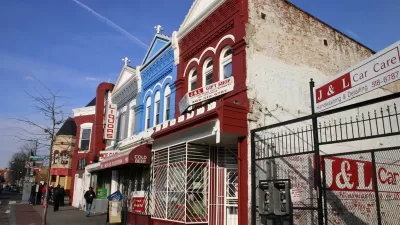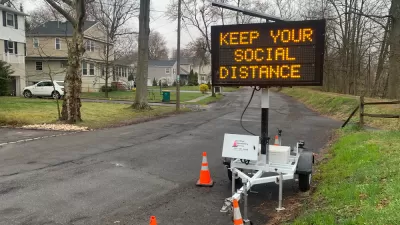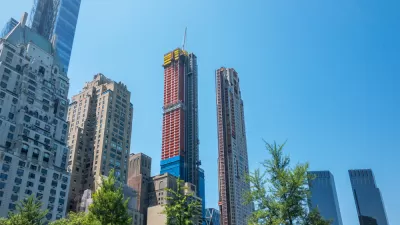Limiting development has been a powerful tool for anti-gentrification activists, but have these policies had counter-productive effects?

In a piece for The Atlantic, Jacob Anbinder challenges the popular thesis that new housing construction in historic neighborhoods causes gentrification, calling the concept misguided and pointing to declining rents during 2020 as proof.
Since the mid-20th century, housing activists and politicians have painted development as broadly detrimental to affordable housing, arguing that this "gentrification-industrial complex" is a key driver of displacement and rising housing costs. This "growth revolt" brought together stakeholders from across the political spectrum, pitting wealthy homeowners and low-income renters against developers. For once, "nature enthusiasts, architectural historians, homeowners, and rock-ribbed socialists" could all agree on something.
"This anti-growth partnership presumes that the interests of the landed and the landless are aligned—that a policy of more tightly regulated development can both generate wealth for those who own property and redistribute it to those who don’t."
The 1970s and 1980s saw the growth of design review boards, height limits, and other density restrictions that continue to shape urban development today. Anbinder argues that these cosmetic changes, which treat luxury construction as a cause rather than consequence of neighborhood change and gentrification, don't acknowledge the true causes of rising housing costs. In his assessment, slow growth policies may have in fact exacerbated the current housing crisis by limiting the number of available units. The difference, he writes, is in ownership. "The telltale sign of a neighborhood in transition isn’t a yoga studio or a high-rise apartment building. It is an old rowhouse, meticulously renovated."
FULL STORY: The Pandemic Disproved Urban Progressives’ Theory About Gentrification

Planetizen Federal Action Tracker
A weekly monitor of how Trump’s orders and actions are impacting planners and planning in America.

Map: Where Senate Republicans Want to Sell Your Public Lands
For public land advocates, the Senate Republicans’ proposal to sell millions of acres of public land in the West is “the biggest fight of their careers.”

Restaurant Patios Were a Pandemic Win — Why Were They so Hard to Keep?
Social distancing requirements and changes in travel patterns prompted cities to pilot new uses for street and sidewalk space. Then it got complicated.

Maui's Vacation Rental Debate Turns Ugly
Verbal attacks, misinformation campaigns and fistfights plague a high-stakes debate to convert thousands of vacation rentals into long-term housing.

San Francisco Suspends Traffic Calming Amidst Record Deaths
Citing “a challenging fiscal landscape,” the city will cease the program on the heels of 42 traffic deaths, including 24 pedestrians.

California Homeless Arrests, Citations Spike After Ruling
An investigation reveals that anti-homeless actions increased up to 500% after Grants Pass v. Johnson — even in cities claiming no policy change.
Urban Design for Planners 1: Software Tools
This six-course series explores essential urban design concepts using open source software and equips planners with the tools they need to participate fully in the urban design process.
Planning for Universal Design
Learn the tools for implementing Universal Design in planning regulations.
Heyer Gruel & Associates PA
JM Goldson LLC
Custer County Colorado
City of Camden Redevelopment Agency
City of Astoria
Transportation Research & Education Center (TREC) at Portland State University
Camden Redevelopment Agency
City of Claremont
Municipality of Princeton (NJ)





























